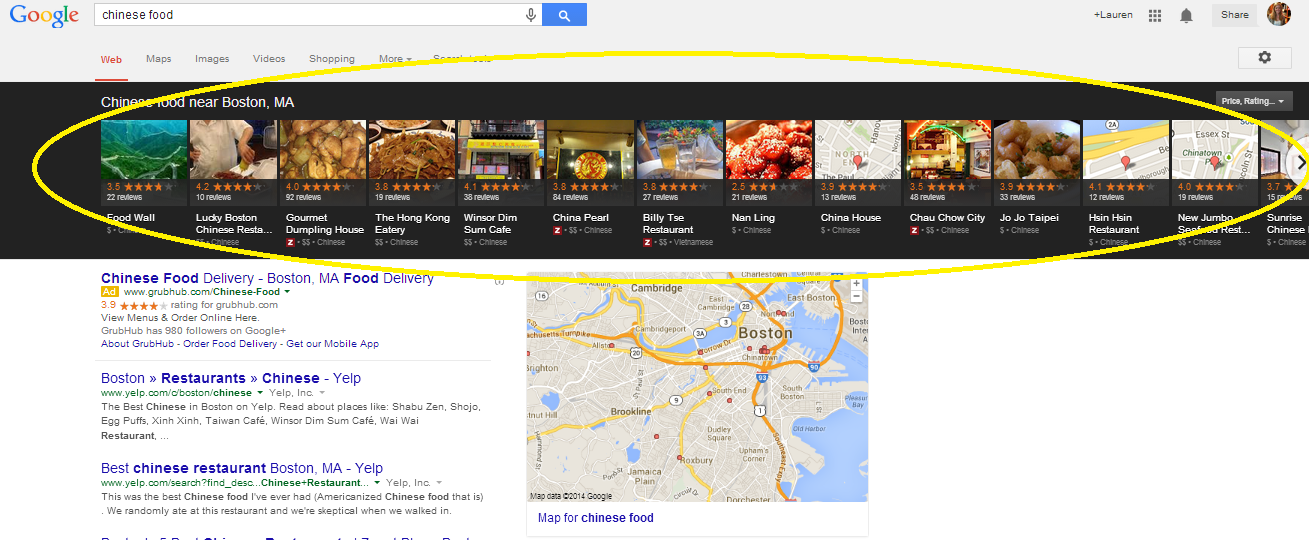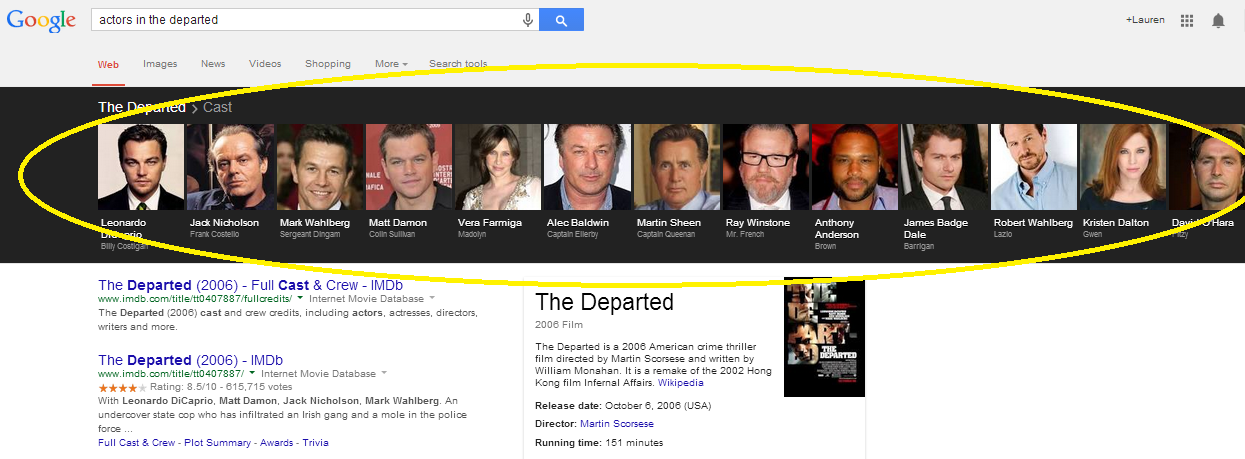Ranking no. 1 in search results was the goal that launched a thousand SEO campaigns (more like millions), but there’s been a shift. Search experts and webmasters are swallowing the idea that getting to the top of SERPs may not be the definitive way to measure their performance now that Google and other search engines have moved toward diversified results.
The short of it is – With the introduction of carousels, maps, info cards and rich snippets, there are more ways to rank in results pages and more relevant ways to rank. There are also new approaches you can take to optimize your content, depending on how people search for you. In the new search world, setting your sights set only on that No. 1 position could mean passing up other positions that are equally or more advantageous.
What if being first isn’t all it’s cracked up to be?
For years, we’ve heard the drastic difference it can make to take that first SERP position, even compared to being ranked No. 2 or 3. A 2013 Chitika report asserted the first domain in search results gets 32.5 percent of all traffic, while the second website gets about half as much – 17.6 percent.
It may not actually be this cut and dry, according to Bing’s Senior Product Manager Duane Forrester, who recently wrote a blog dispelling 10 SEO myths, including the necessity of being No. 1.
“Yes, it’s nice to rank on top, but you know that actual rankings fluctuate on a daily basis. Does the No. 1 spot actually get you more clicks and conversions [than] the No. 2 or No. 3 spot? [It] depends on the phrase sometimes,” Forrester wrote. He even claimed there are some cases when it may not be beneficial for companies to put all of their efforts into getting on Page 1.
“Often the click through rate (CTR) of the top spots on Page 2 are far better than the CTRs on the lower positions on Page 1.”
“For those trying to get off Page 2 of the SERP and onto Page 1, be careful. Often the click through rate (CTR) of the top spots on Page 2 are far better than the CTRs on the lower positions on Page 1 … Unless you can get above the fold, it might be better to stay put and own the top of the second page.”
Forrester is basically asking you to throw your SEO notions out the window, and he isn’t wrong in doing so. Search marketing isn’t as clear cut as it once was. There isn’t one best way to get in results pages anymore. Search engines want to give people best results that match their intent for every search. Hyperlinks and metadescriptions aren’t always the most helpful, which is why Hummingbird and the Knowledge Graph were designed.
While this is good for users, it’s created new challenges for marketers, who must now consider how people are searching for their businesses online and optimize their content accordingly.
A result for every query
One of the main reasons why you can relax on your quest to climb SERPs is that there are new elements pushing organic content down on the page. Here are some of the results that are making No. 1 less important:
1. Rich snippets
With the evolution of Schema.org markup code, the doors swung wide open for search engines, giving them new and interesting ways to serve results. Hyperlinks and text were the standard for snippets before 2010, but Google and other search sites can now show images alongside article headlines, click-to-play video thumbnails, product ratings and prices, store hours, recipe cook times and clickable author bylines to give users a stronger sense of what’s on the other side of a link.

Known as rich snippets, these information-added results generally outrank basic snippets and they take up more real estate on the page. There’s also evidence that rich snippets and content with thumbnails improve clicks by 150 percent.
Video thumbnails have their own benefits, raising click-through rates by 17 percent and doubling organic search traffic. Additionally, Google is reportedly working on a ‘good guy’ algorithm that will identify subject matter authorities via their Authorship and push their content to the top of results.

The transition toward varied results pages is taking place faster than you might think. Around 36 percent of search results now contain content marked up with Schema code, and a study found sites that use it tend to rank four positions higher in search.
2. The carousel
If you want to find a Chinese food restaurant, all you have to do to get a list of all the options in your area (or see reviews and photos of their locations) is type in the phrase, “Chinese food.” There’s no more sifting through blue hyperlinks and clicking through to websites and running into a lot of dead-end domains (a.k.a. menu-less pages that only tell you that the place is indeed a Chinese food restaurant).
Businesses with local SEO campaigns might find more value in visually driven results like maps and carousels than text-based alternatives. It gives customers a clear picture of the company, based on reviews, location and looks, so they can make decisions based on factors other than SERP ranking.
Or maybe you need to reference information, like the cast of a movie. In the past, you’d probably have to search for the movie and read reviews or navigate to a specialty site like IMDB.com and look up the title, then sift through the information until you found the cast listing. Now, Google gives you the answer immediately, along with photos and character names for easy identification.
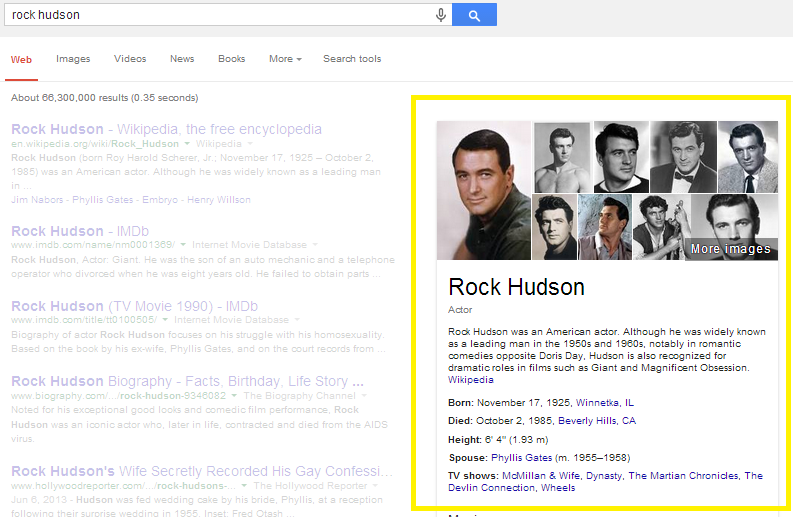 3. The info card
3. The info card
The Info card is another search results feature that’s cropping up more frequently as Google becomes fluent in semantic context. What started with basic stats about famous individuals has expanded, and you’ll now get instant access to information when you search for definitions, synonyms, nutrition data, sports schedules or scores, weather reports and estimated drive times.
You may not be creating content about the weather conditions in your area or covering sports scores, but you may be selling cookbooks that
contain apple pie recipes or travel services for the Northeast. There’s no sure 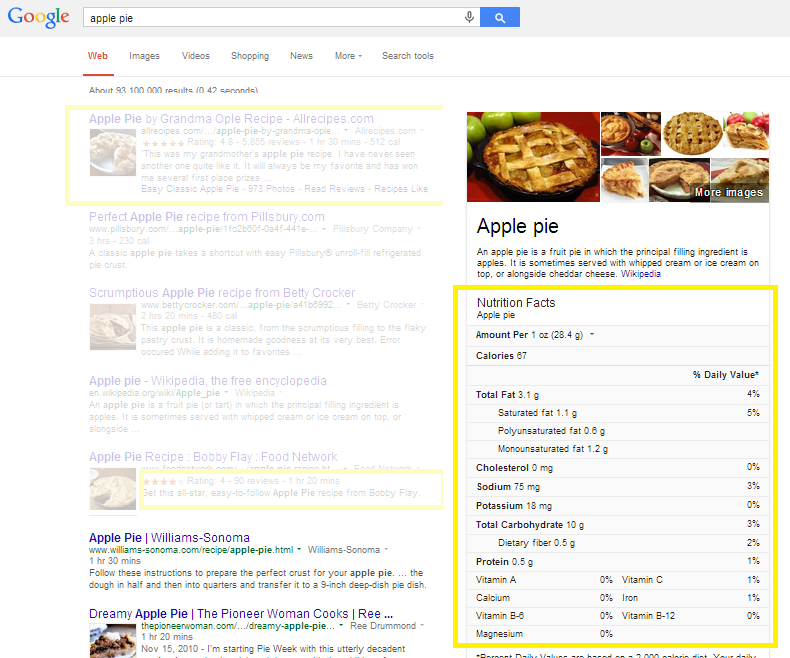 fire way to get your information on an info card, but you’re more likely to rank alongside them when you provide relevant information in your content.
fire way to get your information on an info card, but you’re more likely to rank alongside them when you provide relevant information in your content.
This feature is also important for companies that want to build their digital footprints because they can get cards for their brands if they build a Google+ presence. These show location data, hours of operation, reviews and other information that people would need to make a decision. And by offering all of these facts up, brands are also increasing their chances of showing up in local results or maps.
4. The video
How-to searches have skyrocketed in the past few years, sparked by a change in user behavior. People are going online to troubleshoot, learn new processes and conduct preliminary research – “Can I do this myself, or do I need to hire a professional?” In fact, the number of YouTube searches for how-to videos has increased 254 percent since 2011. Google has seen similar growth and it’s serving more video content in results directly (or indirectly) make a request for how-to tips.
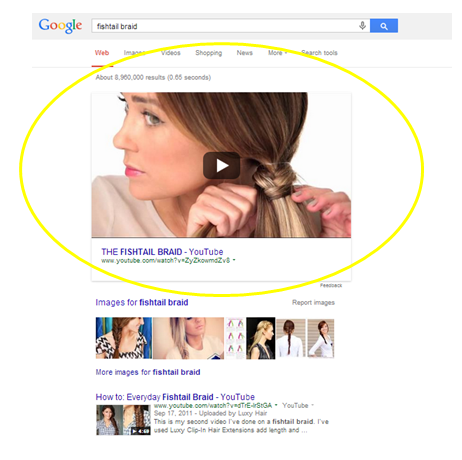
Usually, the videos are shown as thumbnails in the regular results lineup, but the search engine appears to be testing out a new way to deliver streaming answers. Google gave me a video as the primary result for a query for “fishtail braid,” outranking other sites that give written instructions and even those with demonstrative pictures. If this is more than an experiment, it will be crucial that marketers learn the questions their customers are asking and create videos to answer them.
Focus on creating content that people will want to click
I’d argue that a No. 5 result can be just as – or even more valuable – than being No. 1, if the content is optimized for user intent. And while this does turn SEO (as we know it) on its head, it could become a competitive advantage for brands that jump on the change. Online success is less about climbing tooth and nail to the top of search results, or trying to dominate as much SERP real estate as possible, and more about presenting your brand’s content in a way that will compel consumers to click, read, watch or buy.


